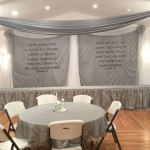How To Decorate a Holiday Homework Notebook
Decorating a holiday homework notebook can transform a mundane task into an engaging and enjoyable activity. It allows for personalization, fosters creativity, and can even serve as a motivator to complete assigned work. The following guidelines offer a structured approach to decorating a holiday homework notebook, covering various techniques and considerations.
Planning and Preparation
Before embarking on the decoration process, it is crucial to plan the design and gather necessary materials. This initial phase is critical for ensuring a cohesive and aesthetically pleasing final product.
The first step involves determining the overall theme or style. This could be related to the subject matter of the homework, the holiday season, or a personal interest. For example, a science assignment could inspire a space or nature theme, while a festive theme might incorporate holiday colors and imagery. Selecting a theme provides a guiding principle for all subsequent design decisions.
Next, the available materials should be assessed. These might include: colored paper, markers, pens, crayons, paint, stickers, glitter, washi tape, photographs, cut-outs from magazines, and fabric scraps. The choice of materials will often depend on the age and abilities of the individual, as well as the desired level of detail and complexity.
Finally, it is recommended to sketch a preliminary design on a separate piece of paper. This allows for experimentation with different layouts, color combinations, and decorative elements before committing to the notebook itself. The sketch should outline the placement of key elements, such as the title, borders, illustrations, and any additional embellishments.
Techniques for Decorating the Notebook Cover
The cover of the notebook is the most prominent area for decoration and serves as the first impression. Several techniques can be employed to create a visually appealing and personalized cover.
One common technique involves using colored paper to create a background. This can be achieved by covering the entire cover with a single sheet of colored paper or by creating a collage using multiple pieces of different colors and textures. Adhesives such as glue sticks or double-sided tape are suitable for attaching the paper to the notebook cover.
Another technique involves drawing or painting directly onto the cover. This allows for greater flexibility in terms of design and color selection. Markers, pens, crayons, and paint can all be used to create intricate patterns, illustrations, or lettering. It is advisable to use paint specifically designed for paper or cardstock to prevent bleeding or warping of the cover.
Adding decorative elements such as stickers, glitter, washi tape, and photographs can enhance the visual appeal of the cover. Stickers are available in a wide variety of shapes, sizes, and themes, making them a versatile option for adding detail and interest. Glitter can be used sparingly to add sparkle and glamour. Washi tape, a decorative adhesive tape, can be used to create borders, patterns, or to secure photographs and other embellishments. Photographs can be used to personalize the cover and add a personal touch.
For added durability, consider applying a sealant or protective coating to the cover after it has been decorated. This will help to protect the design from scratches, smudges, and other forms of damage. Clear contact paper or a spray-on sealant can be used for this purpose.
Decorating the Interior Pages
While the cover is the primary focus for decoration, the interior pages of the notebook can also be embellished to enhance the overall aesthetic and create a more engaging learning environment.
One simple technique is to use colored pens or markers to create borders around the edges of the pages. This can add a pop of color and define the writing area. Different border styles can be used to differentiate between subjects or sections of the notebook.
Illustrations and doodles can be incorporated into the margins or within the text itself to visually represent concepts or ideas. This can be particularly helpful for visual learners and can make the learning process more memorable. Simple drawings, diagrams, or symbols can be used to illustrate key points or to add a touch of personality to the pages.
Color-coding can be used to organize notes and highlight important information. Different colors can be assigned to different subjects, topics, or types of information. This can make it easier to find specific information and can improve comprehension and retention. Highlighters, colored pens, and colored pencils can be used for color-coding.
Adding decorative elements such as stickers, washi tape, and cut-outs can also enhance the interior pages. Stickers can be used to mark important dates, highlight key concepts, or simply to add a touch of fun. Washi tape can be used to create dividers, borders, or to secure loose papers. Cut-outs from magazines or newspapers can be used to illustrate concepts or to add visual interest.
It is important to ensure that the decorations do not interfere with the readability of the notes or the completion of the homework assignments. Decorations should be used sparingly and strategically to enhance the learning experience, not to detract from it. Avoid using excessive amounts of glitter or other embellishments that could make it difficult to write or read.
When using adhesives, it is important to use acid-free and archival-safe materials to prevent damage to the paper over time. Acid-free adhesives will not yellow or degrade the paper, ensuring that the notebook remains in good condition for years to come.
Consider incorporating inspirational quotes or motivational messages into the notebook. This can help to encourage students to stay positive and focused on their studies. Quotes can be written by hand or printed out and glued onto the pages.
Personalizing the notebook with photographs or drawings can create a sense of ownership and pride. Students are more likely to take care of a notebook that they have personalized and to feel motivated to use it.
Ultimately, the goal of decorating a holiday homework notebook is to create a fun and engaging learning environment. By following these guidelines, individuals can transform a mundane task into a creative and rewarding experience.
The decoration should align with the child's interests and capabilities. It is essential to provide guidance and support, but also to allow for creative freedom and self-expression. The process should be enjoyable and should foster a positive attitude towards learning.
Remember to consider the practicality of the decorations. Avoid adding bulky embellishments that could make the notebook difficult to carry or store. Ensure that the decorations do not obstruct the writing area or interfere with the completion of the homework assignments.
Safety considerations are paramount, especially when working with young children. Supervise the use of scissors, glue, and other potentially hazardous materials. Ensure that all materials are non-toxic and age-appropriate.
By carefully planning and executing the decoration process, the holiday homework notebook can become a treasured keepsake that reflects the individual's creativity, personality, and academic achievements.

Holiday Homework Border Design For Notebook

Holiday Homework Design Border

Diy Holiday Homework Copy Decoration Ideas Cute Beautiful Project Assignment Note Book Designs

O Homework Back To School Personalized Notebook With Cricut 100 Directions

Diy Holiday Homework Copy Front Page Decoration Ideas Special

How To Make Holiday Homework Cover Page Design Decorative Of Project

Summer Holiday Project Homework Design Front Page Border ब र डर

Project File Cover Page Peacock Design Practical Khata Front Tarun Art Book Flower Drawing Paper

Ribbon Draw Border Design On Paper

Diy Holiday Homework Copy Front Page Decoration Ideas Special
Related Posts







